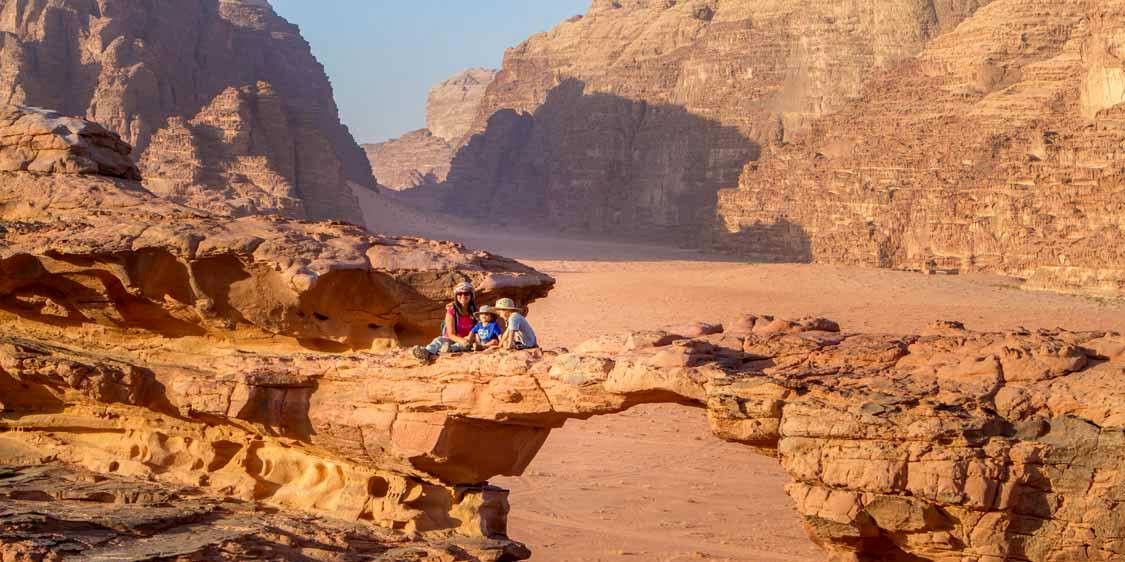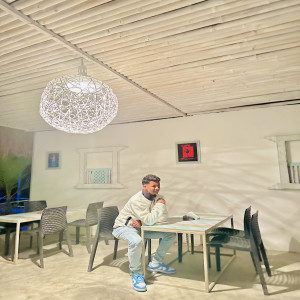Explore Petra
Exploring Petra, the ancient Nabatean city in Jordan, is an unforgettable experience that takes visitors back over 2,000 years to a time when Petra was a thriving trading hub. Carved directly into vibrant red, white, pink, and sandstone cliff faces, the city is renowned not just for its historical and archaeological significance, but also for its stunning natural beauty. Here’s a guide to help you make the most of your visit to Petra:
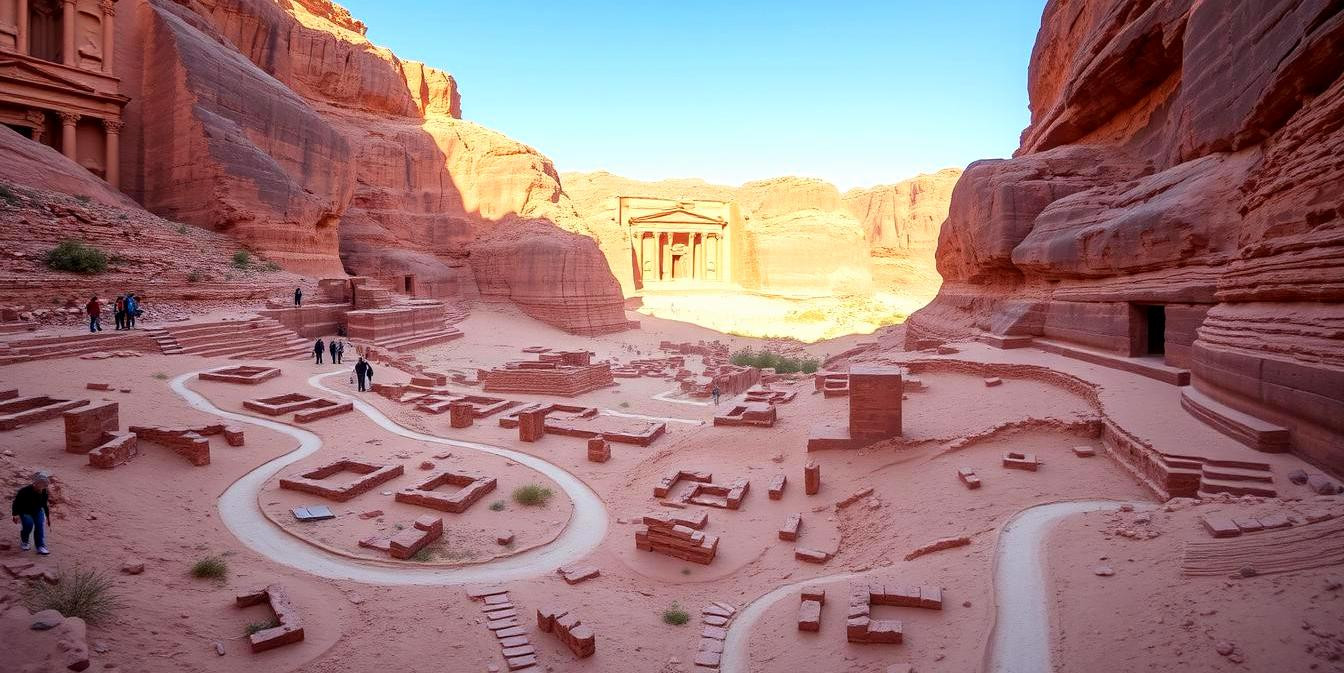
-
Entering through the Siq: The journey into Petra begins with the Siq, a narrow gorge that stretches about 1.2 kilometers. The walls, which reach up to 80 meters in height, dramatically part to reveal Al-Khazneh (the Treasury), one of Petra’s most famous monuments. This stunning reveal is a highlight for many visitors.
-
The Treasury (Al-Khazneh): Upon exiting the Siq, you are greeted by the awe-inspiring view of the Treasury. Its intricate facade, carved out of the sandstone, is believed to have been the mausoleum of an important Nabatean king. The Treasury is Petra’s most famous and photographed building, often lit by candles at night during the Petra by Night tour, offering a magical experience.
-
The Street of Facades and the Theatre: As you walk further into Petra, the Street of Facades offers a series of tombs with large, impressive facades carved into the sandstone. Nearby, the Theatre, which could seat around 3,000 spectators, showcases the Nabateans’ architectural skills and their ability to integrate Hellenistic influences into their own work.
-
The Royal Tombs: Further along, the path leads to the Royal Tombs, which include the Urn Tomb, Silk Tomb, Corinthian Tomb, and the Palace Tomb. Each tomb has its own unique architectural features and grandeur, reflecting the wealth and craftsmanship of the Nabateans.
-
The Monastery (Ad Deir): A visit to Petra is not complete without the trek to the Monastery. This monumental building is similar in design to the Treasury but is far larger and perched high atop a mountain. The hike to reach the Monastery involves over 800 steps carved out of the mountain but offers rewarding views of the surrounding mountains and valleys.
-
Hiking Opportunities: For the more adventurous, Petra offers numerous hiking trails that provide different perspectives of the site and surrounding area. Trails such as the hike to the High Place of Sacrifice and the back trail to the Monastery offer both challenging treks and panoramic views.
-
Cultural Interactions: In addition to its archaeological and aesthetic appeal, Petra provides insights into the Bedouin lifestyle. Many Bedouins live in and around Petra and run small stalls or offer guided tours on camels or donkeys.
-
Petra by Night: For a truly unique experience, the Petra by Night tour allows visitors to see the Treasury lit by hundreds of candles. The path through the Siq is also candlelit, creating an enchanting atmosphere that enhances the mystical appeal of Petra.
Petra is not just an archaeological wonder but also a testament to human ingenuity and the cultural confluence of the Nabatean, Greek, Roman, and Byzantine civilizations. It is, without doubt, a must-visit for anyone traveling to Jordan.
Adventure in Wadi Rum
Wadi Rum, also known as the Valley of the Moon, is a stunning desert landscape in southern Jordan, famous for its towering sandstone mountains and vast red sands. This UNESCO World Heritage site offers a breathtaking backdrop for a variety of adventurous activities and a glimpse into the traditional Bedouin lifestyle. Here’s what you can expect when planning an adventure in Wadi Rum:
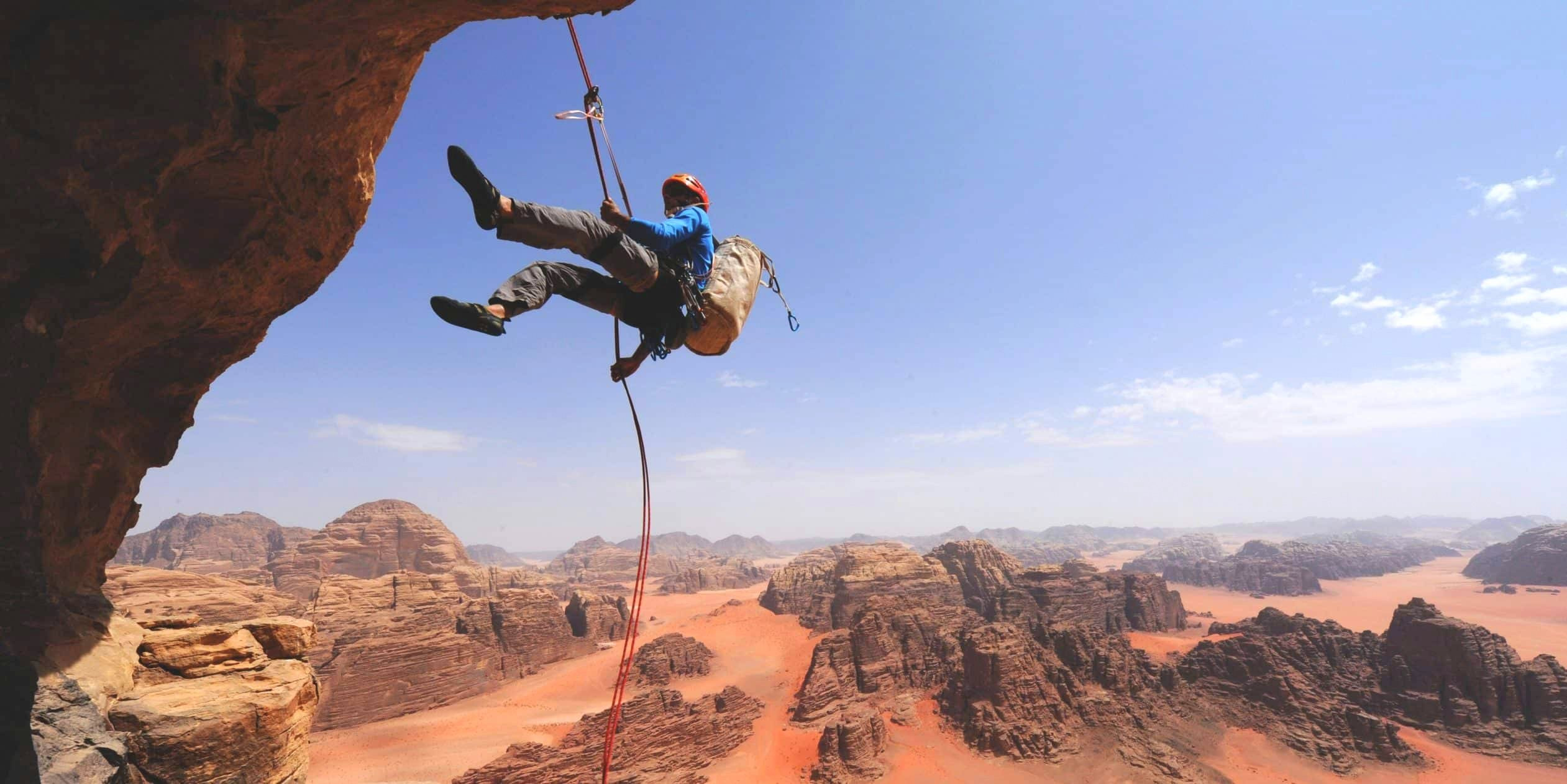
-
Jeep Tours: Explore the vast, awe-inspiring landscapes of Wadi Rum on a guided jeep tour. These tours allow you to cover large areas of the desert and visit some of the most iconic sights, including the Seven Pillars of Wisdom, named after T.E. Lawrence’s book, and various canyons, arches, and rock bridges. The rugged terrain and sprawling vistas make for an unforgettable journey.
-
Hot Air Balloon Flights: For a truly unique perspective of Wadi Rum's stunning landscapes, take a hot air balloon flight at sunrise. The silence of the early morning, paired with panoramic views of the sun lighting up the sandstone cliffs and sandy expanses, offers a serene and picturesque experience.
-
Rock Climbing: Wadi Rum is a climber’s paradise with its sheer granite and sandstone cliffs. There are routes available for all skill levels, from beginners to advanced climbers. Local Bedouin guides, who know the area extensively, can lead you to the best spots and provide climbing equipment if necessary.
-
Camel Safaris: Experience the desert as the Bedouins have for centuries - on the back of a camel. Camel safaris can vary in length, from short rides to multi-day treks across the desert, including stops at nomadic tents for tea and traditional meals.
-
Hiking and Trekking: Numerous hiking and trekking routes throughout Wadi Rum offer visitors a chance to explore the varied landscapes on foot. Popular hikes include the trek to Burdah Rock Bridge, one of the highest natural arches in the world, and the challenging hike up to Jebel Um Adaami, Jordan’s highest peak.
-
Overnight Camping: To truly immerse yourself in the beauty of Wadi Rum, stay overnight in a Bedouin camp. These camps range from basic to luxurious, with traditional tents equipped with comfortable bedding. Spend the evening enjoying a Bedouin dinner, listening to local music, and stargazing in the clear desert sky.
-
Cultural Experiences: Engage with the local Bedouin community to learn about their heritage and lifestyle. Many tours include visits to Bedouin tents, where you can enjoy warm hospitality, try traditional Jordanian dishes, and listen to stories about the desert and its people.
Wadi Rum not only offers thrilling adventures but also a profound connection with nature and a deeper understanding of the Bedouin way of life, making it a key destination for any adventurer traveling to Jordan.
Float in the Dead Sea
Floating in the Dead Sea is one of the most unique and relaxing experiences you can have in Jordan. Renowned for being the lowest point on Earth and having one of the saltiest bodies of water in the world, the Dead Sea offers visitors the unusual ability to float effortlessly on its surface due to its high saline content. Here's what you need to know to make the most of your visit to this extraordinary natural wonder:
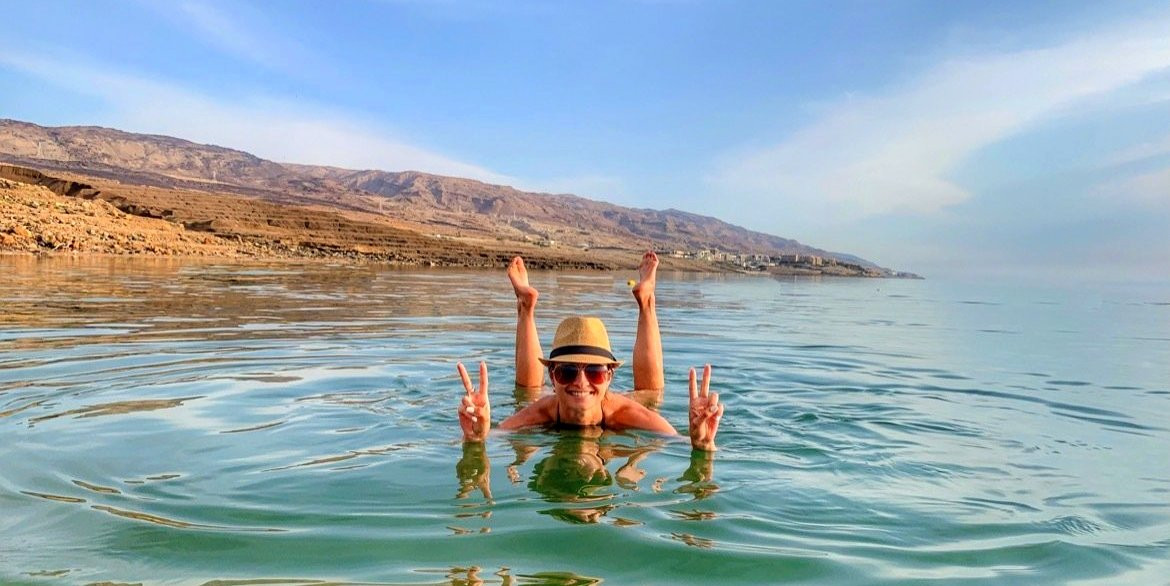
-
Unique Floating Experience: The high salt concentration in the Dead Sea (about 34% salinity) makes the water incredibly buoyant. This means you can easily float on the surface without any effort. It’s a surreal feeling to lie back in the water and read a book or simply soak up the sun while bobbing gently on the surface.
-
Therapeutic Mud: The Dead Sea mud is rich in minerals like magnesium, sodium, potassium, and calcium, which are believed to have therapeutic and beautifying effects on the skin. Visitors often cover themselves in the mineral-rich mud, let it dry on their skin, and then wash off in the sea for a natural spa-like treatment.
-
Health Benefits: Many people visit the Dead Sea for its health benefits. The unique combination of mineral-rich water, soothing mud, low pollen and allergens in the atmosphere, and reduced harmful UV radiation due to extra atmospheric pressure at this low altitude is thought to help with skin ailments like psoriasis and eczema, as well as respiratory issues.
-
Scenic Beauty and Relaxation: The Dead Sea is surrounded by stunning natural landscapes, including rugged cliffs and serene desert panoramas. Many resorts along the shores offer private beaches, spas, and other amenities where you can relax and enjoy the serene environment. Watching a sunset over the Dead Sea is particularly spectacular as the water reflects the changing colors of the sky.
-
Access and Amenities: The Jordanian side of the Dead Sea is home to several well-developed resorts and spas that provide easy access to the sea along with freshwater pools, mud treatments, and other luxurious amenities. These resorts often offer day passes for travelers not staying overnight.
Floating in the Dead Sea is more than just a unique bathing experience; it's an opportunity to experience one of the world’s most extraordinary natural and therapeutic landscapes. Whether you're there for the health benefits or the simple joy of floating without a float, the Dead Sea is sure to provide a memorable and rejuvenating experience.
Visit Amman
Visiting Amman, the capital of Jordan, offers a vibrant mix of ancient history and modern culture. This bustling metropolis serves as both a gateway to the nation's storied past and a dynamic hub of contemporary life. Here's a comprehensive guide to making the most of your visit to Amman:
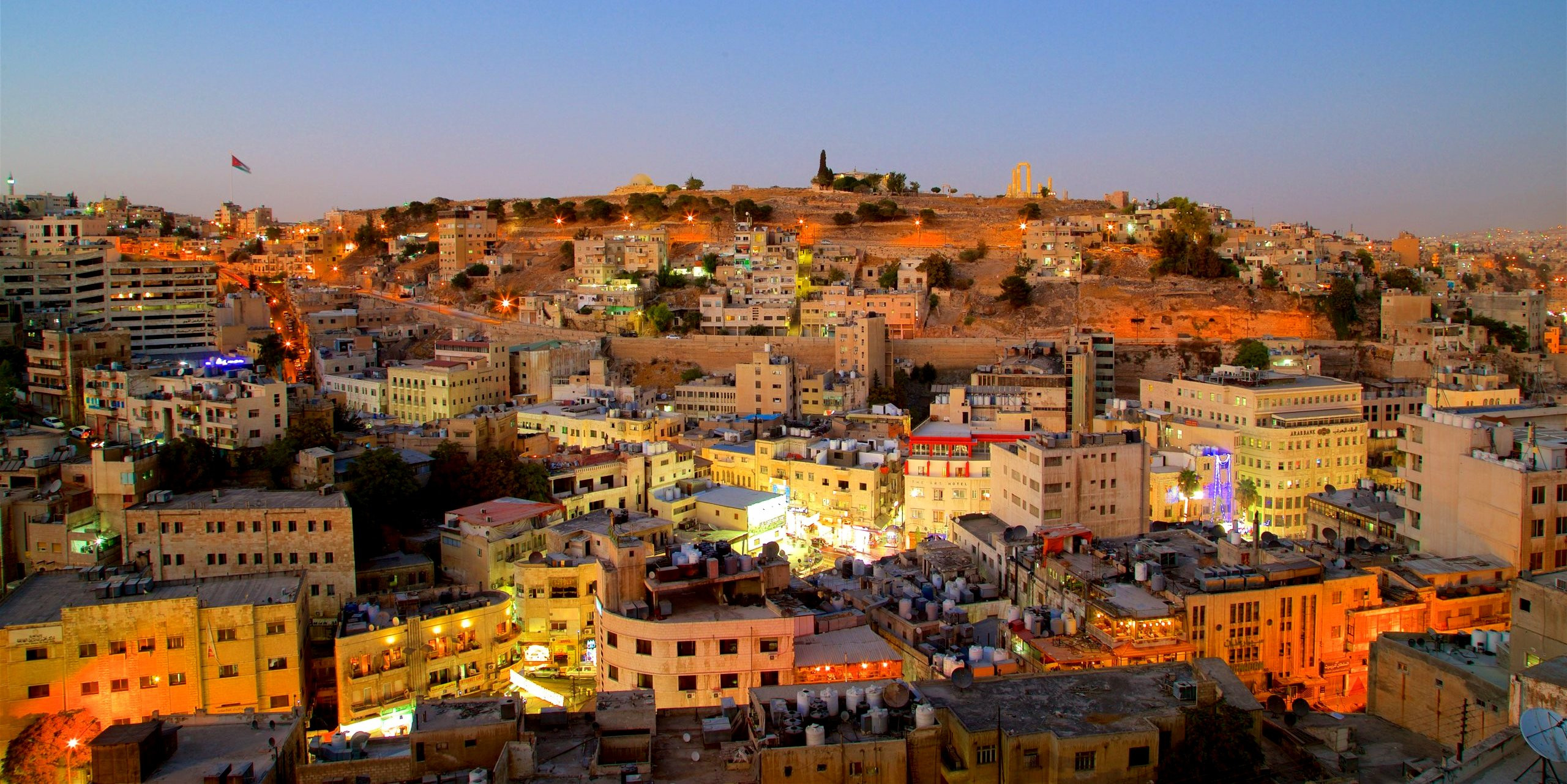
-
The Citadel: Perched on one of the highest hills in Amman, the Citadel offers panoramic views of the sprawling city. This ancient site, which has been inhabited since the Bronze Age, features significant structures such as the Temple of Hercules, the Umayyad Palace, and a Byzantine church. The Jordan Archaeological Museum, located within the Citadel, houses a collection of artifacts from across Jordan, including the Dead Sea Scrolls and four rare Iron Age sarcophagi.
-
Roman Theatre: A striking landmark in the heart of the city is the Roman Theatre, an impressively preserved amphitheater that dates back to the 2nd century AD when Amman was known as Philadelphia. The theatre, which can seat around 6,000 spectators, is still used today for cultural events and festivals, giving visitors a living taste of history.
-
Downtown Amman (Al-Balad): Exploring downtown Amman provides a sensory feast of sounds, sights, and smells. This area features bustling markets (souks), traditional coffeehouses, and eateries serving local dishes. Don't miss the chance to try falafel, hummus, and mansaf—the national dish of Jordan. Al-Balad also hosts several shops selling traditional crafts, spices, and souvenirs.
-
Rainbow Street: Rainbow Street is a vibrant part of Amman, known for its historic buildings, lively cafes, and boutiques. It's a great place to people-watch, enjoy a meal, or pick up some local art and handicrafts. The street is particularly lively on Friday evenings when locals and tourists alike stroll to enjoy the cool evening air.
-
King Abdullah Mosque: The King Abdullah Mosque, which can accommodate up to 7,000 worshippers, is one of the few mosques in Amman that openly welcomes non-Muslim visitors. Its stunning blue dome is an iconic part of Amman’s skyline. Inside, visitors can admire the beautiful Islamic architecture and decoration.
-
Jordan Museum: The Jordan Museum, located in the Ras Al-Ain area of Amman, is the largest museum in Jordan and offers a comprehensive overview of the country’s rich history and cultural heritage. Highlights include the Ain Ghazal statues, some of the oldest human statues ever found, dating back to 7250 BC.
-
Culinary Experiences: Amman offers a wide array of dining options, from traditional Jordanian eateries to modern cafes and international restaurants. Be sure to try local specialties such as knafeh, a sweet cheese pastry, which is a favorite in the region.
-
Cultural Events: If your visit coincides with cultural events or festivals, Amman is a fantastic place to experience them. The city hosts various music, film, and art festivals throughout the year, reflecting the lively and diverse cultural scene.
Amman is not just a stopover; it’s a place where ancient history intersects with a lively, modern culture, offering visitors a rich, multifaceted experience. Whether you're exploring its historical landmarks, shopping in its bustling markets, or sampling its culinary delights, Amman is sure to captivate.
Uncover Jerash
Jerash, located just north of the capital Amman, is one of Jordan's most treasured archaeological sites and one of the best-preserved examples of Roman architecture outside of Italy. This ancient city, once a member of the Decapolis—a league of ten cities bound by powerful commercial and cultural interests under Roman rule—offers a fascinating glimpse into the grandeur of the Roman Empire. Here’s how you can uncover the wonders of Jerash during your visit:
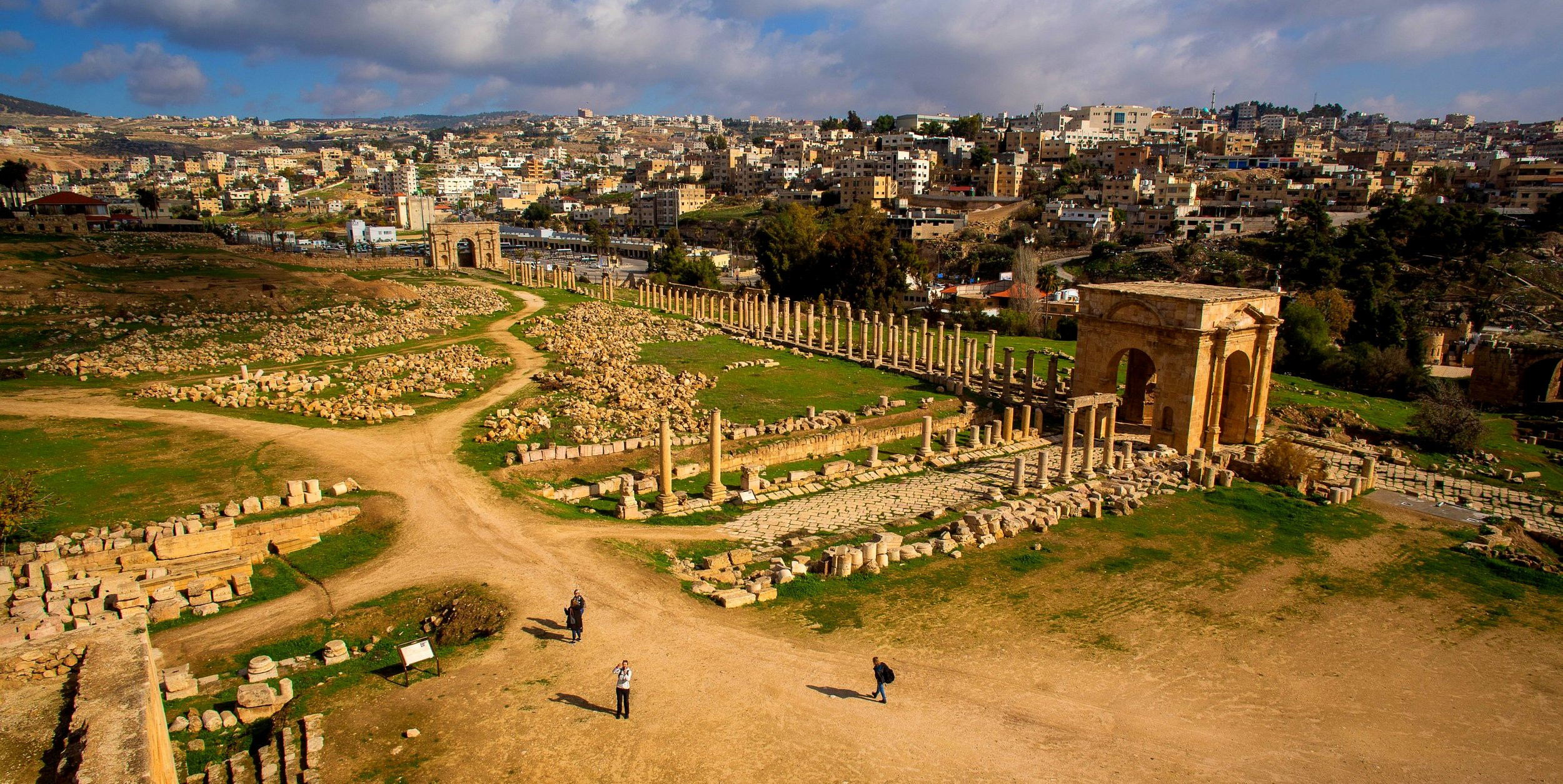
-
Hadrian’s Arch: Your exploration of Jerash might start at the splendid Hadrian’s Arch, built in 129 AD to commemorate Emperor Hadrian’s visit. This impressive gateway sets the stage for the architectural marvels that lie within.
-
Hippodrome: One of the first sites within the city is the Hippodrome, a small Roman circus where chariot races were held. It’s one of the smallest of its kind in the Roman world, but it provides a vivid picture of the entertainment that once captivated the city's inhabitants.
-
The Oval Forum: Moving on, you’ll encounter the Oval Forum, an unusual wide, elliptical plaza surrounded by a colonnade of Ionic columns. This public square served as a social and commercial hub where citizens gathered.
-
The Cardo: The Cardo, a 600-meter-long colonnaded street paved with original stones, and still showing the ruts of chariots, runs through the heart of Jerash. Walking down this thoroughfare is like walking through history, with the city’s life once bustling around you.
-
The Temples of Zeus and Artemis: Jerash houses two significant temples: the Temple of Zeus, built atop the hill in 162 AD, and the Temple of Artemis, the larger and more impressive of the two, honoring the patron goddess of the city. The Temple of Artemis features majestic Corinthian columns, several of which still stand tall against the test of time.
-
The South Theatre and North Theatre: Jerash contains two large theatres. The South Theatre, which seats more than 3,000 spectators, still hosts performances during cultural events like the Jerash Festival of Culture and Arts. The North Theatre, smaller but equally impressive, was used for government meetings as well as entertainment.
-
Nymphaeum: An ornate public fountain, the Nymphaeum, located near the Forum, was once adorned with marble and mosaics and served as a monumental fountain, providing fresh water to the city’s inhabitants.
-
Jerash Archaeological Museum: The Jerash Archaeological Museum on-site houses an array of artifacts found in the area, including pottery, coins, statues, and sarcophagi, which offer deeper insight into the daily lives of the ancient residents.
Visiting Jerash offers a journey back in time to one of the grandest cities of the Roman Empire. Its well-preserved ruins not only speak of its past importance and wealth but also offer a rare opportunity to walk through the living history of a Roman city in the Middle East.
Snorkel and Dive in Aqaba
Aqaba, Jordan's only coastal city, is nestled at the northern tip of the Red Sea and is renowned for its vibrant coral reefs and diverse marine life. This makes it an ideal destination for snorkeling and diving enthusiasts looking to explore the underwater wonders of the Red Sea. Here’s what you need to know to enjoy snorkeling and diving in Aqaba:

-
Coral Reefs and Marine Life: Aqaba’s coral reefs are vibrant and healthy, home to a stunning variety of colorful fish, sea turtles, rays, and even occasional dolphins. The clear, calm waters ensure excellent visibility, making it a fantastic place for underwater photography and marine observation.
-
Dive and Snorkel Operators: Aqaba has numerous dive centers that offer courses for beginners and guided dives for certified divers. These centers adhere to strict safety regulations, ensuring a safe and enjoyable experience for everyone. Equipment rental is readily available, so you don’t need to bring your own gear unless you prefer to.
-
Best Time to Dive: The best time to dive in Aqaba is between April and November when the water temperatures are warmer. However, diving is available year-round, and the off-peak seasons can be great for those looking to avoid the crowds.
-
Conservation Efforts: The Aqaba Marine Park was established to protect and manage the natural marine biodiversity of the area. It's crucial for visitors to respect these efforts by not touching the coral or littering, and by observing all marine life at a respectful distance.
-
Snorkeling for Non-Divers: For those who are not dive-certified, snorkeling provides an equally thrilling experience. Many of Aqaba’s reefs are accessible from the beach, making them perfect for snorkeling. Popular snorkeling spots include the Aqaba Marine Park and the beaches around the Royal Diving Club.
-
Further Adventures: In addition to its underwater attractions, Aqaba offers beautiful beaches, water sports, and other recreational activities. It’s also close to other notable attractions in Jordan, making it a great base for exploring places like Wadi Rum and Petra.
Snorkeling and diving in Aqaba not only offer a chance to explore the enchanting world beneath the Red Sea's surface but also provide a refreshing complement to the historical and desert tours in Jordan. Whether you’re a seasoned diver or a first-time snorkeler, Aqaba’s underwater paradise is sure to provide a memorable adventure.
Experience Jordanian Cuisine
Experiencing Jordanian cuisine is a delightful journey through a rich culinary landscape that reflects the country’s history, culture, and geographical diversity. Jordanian dishes are typically a wonderful mix of flavors from the Middle East and the Mediterranean, featuring fresh ingredients, aromatic spices, and hearty combinations. Here’s a guide to some of the must-try dishes and culinary experiences in Jordan:
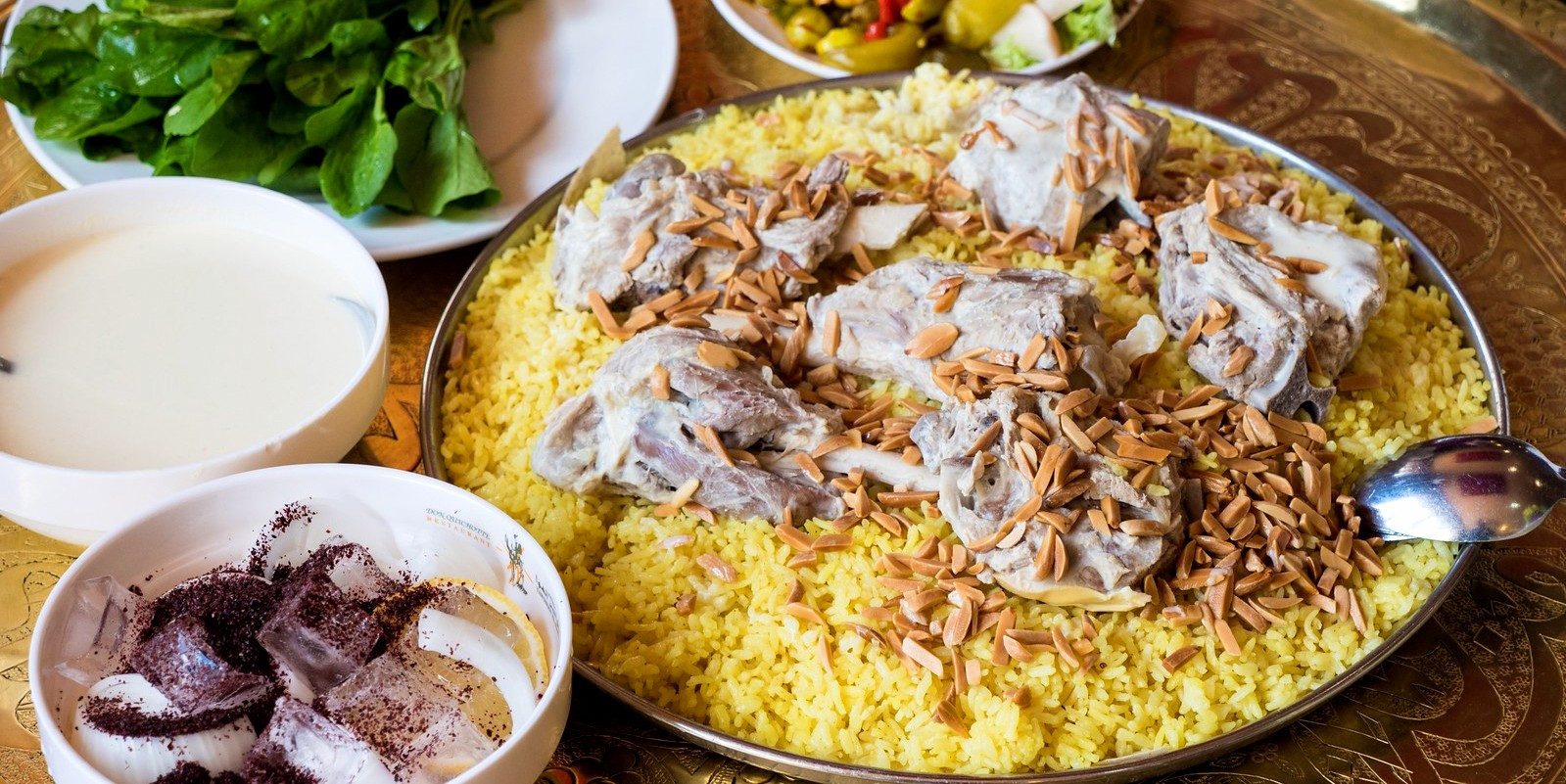
-
Mansaf: Jordan’s national dish, Mansaf, is a celebration of flavors and tradition. It consists of lamb cooked in a sauce of fermented dried yogurt called jameed and served with rice or bulgur. Traditionally, Mansaf is eaten communally from a large platter, which underscores the Jordanian value of hospitality and sharing.
-
Mezze: A staple of Jordanian cuisine, mezze is a selection of small dishes served as appetizers or as a meal itself. Common mezze dishes include hummus (a creamy chickpea dip), baba ghanoush (a smoky eggplant dip), tabbouleh (a parsley salad), and muhammara (a hot pepper dip with walnuts).
-
Falafel and Shawarma: These popular street foods are found throughout Jordan and make for a quick, delicious meal. Falafel, deep-fried balls made from ground chickpeas or fava beans, are usually served in pita bread with salad and tahini sauce. Shawarma, on the other hand, involves thinly sliced cuts of meat, like chicken or lamb, that are stacked in a cone-like shape and roasted on a slowly-turning vertical rotisserie.
-
Maqluba: Maqluba, which translates to "upside down," is a casserole made with rice, vegetables, and meat, typically chicken or lamb. The dish is cooked in a pot, which is then flipped upside down when served, hence the name. It’s a beloved family dish known for its flavors and theatrical presentation.
-
Zarb: Zarb is a Bedouin barbecue dish that involves cooking meat, vegetables, and sometimes rice in an underground pit. The food is slow-cooked in a sealed pit, giving it a unique, smoky flavor. Experiencing zarb is also a cultural journey into the Bedouin way of life, often accompanied by traditional music and storytelling.
-
Sweets and Desserts: Jordanian sweets are not to be missed. Knafeh, a dessert made from thin noodle-like pastry or semolina, layered with cheese, and soaked in sweet, sugar-based syrup, is particularly popular. Baklava, layers of phyllo pastry filled with nuts and soaked in honey, is also widely enjoyed.
-
Drinks: To accompany meals, you might try freshly squeezed juices available at local markets, or traditional hot drinks like Turkish coffee or mint tea. Another popular beverage is limonana, a type of lemonade blended with fresh mint.
-
Culinary Tours and Cooking Classes: To deepen your culinary experience, consider participating in a cooking class where you can learn how to prepare traditional Jordanian dishes. Culinary tours also offer a way to explore local markets and learn about the ingredients that are fundamental to Jordanian cuisine.
Exploring Jordanian cuisine offers more than just meals; it provides insights into the country’s traditions, making dining an integral part of the travel experience in Jordan.
Tips for Things to do in Jordan
Exploring Jordan is a rich experience, filled with ancient history, stunning landscapes, and vibrant culture. Here are some essential tips to enhance your travel experience and ensure you make the most of your visit to this captivating country:
Plan Your Itinerary Wisely
-
Time Allocation: Jordan might seem small, but its attractions are diverse and spread out. Plan your itinerary to allow enough time at each site. For instance, dedicate at least a full day to Petra, a few hours to the Dead Sea, and a day or two for Wadi Rum.
-
Geographical Planning: Try to organize your visits geographically to save time and minimize backtracking. Many travelers start in the north at Amman, head to Jerash, then work their way down to Petra and Wadi Rum, finishing at the Dead Sea or Aqaba.
Dress Appropriately
-
Cultural Respect: Jordan is a predominantly Muslim country, so dress modestly, especially when visiting religious sites and smaller, more conservative towns.
-
Weather Preparedness: Pack for the climate. Summers can be extremely hot, especially in the desert regions like Petra and Wadi Rum, so light, breathable clothing is essential. Nights can be cold, particularly in the desert, so bring layers.
Stay Hydrated
- Water Intake: The Jordanian climate can be dry and hot, making hydration crucial. Always carry a bottle of water with you, especially when hiking or walking through desert areas.
Try Local Cuisine
-
Food Exploration: Jordanian cuisine is delicious and diverse. Don't miss out on local dishes such as mansaf (the national dish of lamb cooked in fermented dried yogurt), maqluba, and sweets like knafeh.
-
Street Food: Eating street food is a great way to immerse yourself in local culture. Places with high turnover are usually a good sign of freshness and quality.
Understand Local Customs and Etiquette
-
Greeting Customs: Typical greetings involve a handshake with the right hand. Close friends and relatives might exchange kisses on the cheek.
-
Tipping Etiquette: Tipping is customary in Jordan. In restaurants, it’s common to leave around 10% of the bill if a service charge hasn’t already been added.
Manage Your Travel Logistics
-
Visa Requirements: Check visa requirements well in advance of your trip. Many nationalities can obtain a visa on arrival, but it’s best to verify this before you travel.
-
Transport Options: Renting a car can give you flexibility, especially for accessing more remote areas like Wadi Rum. However, local buses are available between major cities and are an affordable option.
Cultural and Historical Engagement
-
Hire Local Guides: In places like Petra and Jerash, consider hiring a local guide not only for their knowledge but also to support the local economy. Guides can offer insights you might not find in guidebooks.
-
Visit Local Markets: Markets like those in Amman offer a vibrant insight into daily Jordanian life and are a good place to buy souvenirs and artisan products.
Health and Safety
-
Travel Insurance: Always travel with insurance that covers health emergencies, especially if you plan on engaging in activities like hiking or camel riding.
-
Emergency Numbers: Keep a note of emergency contacts, including local emergency services and your home country’s embassy.
With these tips, you’re set to have a fulfilling journey through Jordan, experiencing its archaeological wonders, natural beauty, and cultural depth. Each part of Jordan offers a unique glimpse into its history and contemporary life, promising a memorable travel experience.
Best Time for Things to do in Jordan
Choosing the best time to visit Jordan is crucial for enjoying all the country has to offer, from archaeological sites and natural wonders to cultural festivals. The ideal time to visit largely depends on the weather, which varies significantly across different regions of the country. Here’s a breakdown to help you plan your trip:
-
Spring (March to May): Spring is widely regarded as the best time to visit Jordan. The weather is mild and pleasant, with average temperatures ranging from 18°C to 25°C (64°F to 77°F), making it ideal for outdoor activities like hiking and sightseeing. The landscape is notably beautiful during this time, as the winter rains bring a rare bloom of wildflowers, even in the desert areas.
-
Autumn (September to November): Autumn is another excellent time to visit, with similar advantages to spring. The heat of the summer has subsided, and the tourist crowds are generally smaller. Temperatures are comfortable, ideal for exploring Petra, Jerash, and other archaeological sites comfortably.
-
Summer (June to August): Summer in Jordan can be extremely hot, especially in desert areas like Wadi Rum and the Dead Sea, where temperatures can soar above 40°C (104°F). However, this is a good time to visit the northern highlands and Amman, where temperatures are relatively cooler.
-
Winter (December to February): Winter in Jordan is generally mild compared to European winters, but it can get quite cold, especially at night and in the desert. Snowfall is rare but possible in Amman and the highlands. Rain is more frequent, which might affect travel plans, particularly if you intend to hike or camp.
Tips for Visiting
-
Dress Appropriately: Regardless of the season, it's wise to dress in layers. Nights can be cool, even in summer.
-
Plan According to Activities: If you're interested in trekking or visiting nature reserves, spring and autumn are the best times. For cultural events and a more urban experience, summer and autumn are ideal despite the heat.
- Book in Advance: During peak seasons (spring and autumn), it's advisable to book accommodations and tours well in advance to secure the best rates and availability.
Overall, spring and autumn offer the most comfortable weather conditions and the opportunity to experience Jordan's natural beauty and cultural richness at their best.
Jordan offers a myriad of unforgettable experiences, from the historical magnificence of Petra and the tranquil float in the Dead Sea to the vibrant local culture and tantalizing cuisine. Whether you're an adventure seeker, history enthusiast, or culinary explorer, Jordan provides a rich tapestry of activities to satisfy every traveler. With the best visiting seasons being spring and autumn for ideal weather, planning your trip during these times enhances your experience. Jordan's welcoming locals and diverse landscapes await to enrich your journey with deep cultural insights and thrilling adventures. Ready your spirit of discovery and embark on a captivating journey to Jordan, a treasure trove of historical and natural wonders.
FAQs for Things to do in Jordan
Q: What is the best time of year to visit Jordan?
A: The best times to visit Jordan are during the spring (March to May) and autumn (September to November) when the weather is mild and conducive for sightseeing and outdoor activities.
Q: How many days are needed to visit Jordan?
A: Ideally, a week to ten days is sufficient to explore the main attractions of Jordan, such as Petra, Wadi Rum, the Dead Sea, and Amman, without feeling rushed.
Q: Is Jordan safe for tourists?
A: Yes, Jordan is generally considered safe for tourists. It is known for its friendly and welcoming people. However, as with any travel destination, it's always a good idea to follow general safety precautions and stay informed about current travel advisories.
Q: What should I wear when visiting Jordan?
A: Dress modestly, especially when visiting religious sites or more conservative rural areas. Lightweight layers, a hat, and sunscreen are recommended due to the sunny climate.
Q: Do I need a visa to visit Jordan?
A: Many nationalities can obtain a visa on arrival at major airports and border crossings. However, it’s advisable to check the latest visa requirements from official sources or your local Jordanian embassy before traveling.
Q: What are the must-try foods in Jordan?
A: Do not miss out on local dishes such as Mansaf (the national dish of Jordan), Falafel, Hummus, and sweets like Knafeh. Trying the local cuisine is a key part of the Jordanian experience.
Q: What cultural norms should I be aware of in Jordan?
A: Jordanians are generally very hospitable. It’s polite to accept offers of coffee or tea. Also, public displays of affection are frowned upon, and it's respectful to ask permission before taking photos of people.
Q: How do I get around in Jordan?
A: Renting a car provides the most flexibility for traveling between cities and attractions. Alternatively, taxis and ride-sharing services are readily available in urban areas. For longer distances, buses are a practical option.
Q: What are some tips for visiting Petra?
A: Start early to beat the crowds and the heat, wear comfortable walking shoes, and bring plenty of water. Consider spending at least one full day in Petra to explore extensively.
Q: Can I use credit cards throughout Jordan?
A: Credit cards are widely accepted in hotels, restaurants, and larger shops, especially in tourist areas. However, it’s advisable to carry some cash for smaller shops, markets, and rural areas.
For the Nepal tour, please click here.
If you are looking for different kinds of Nepal Tours or Trekking Packages, feel free to contact us.
